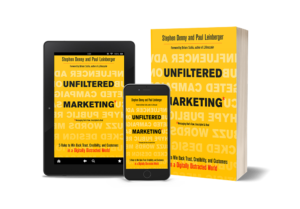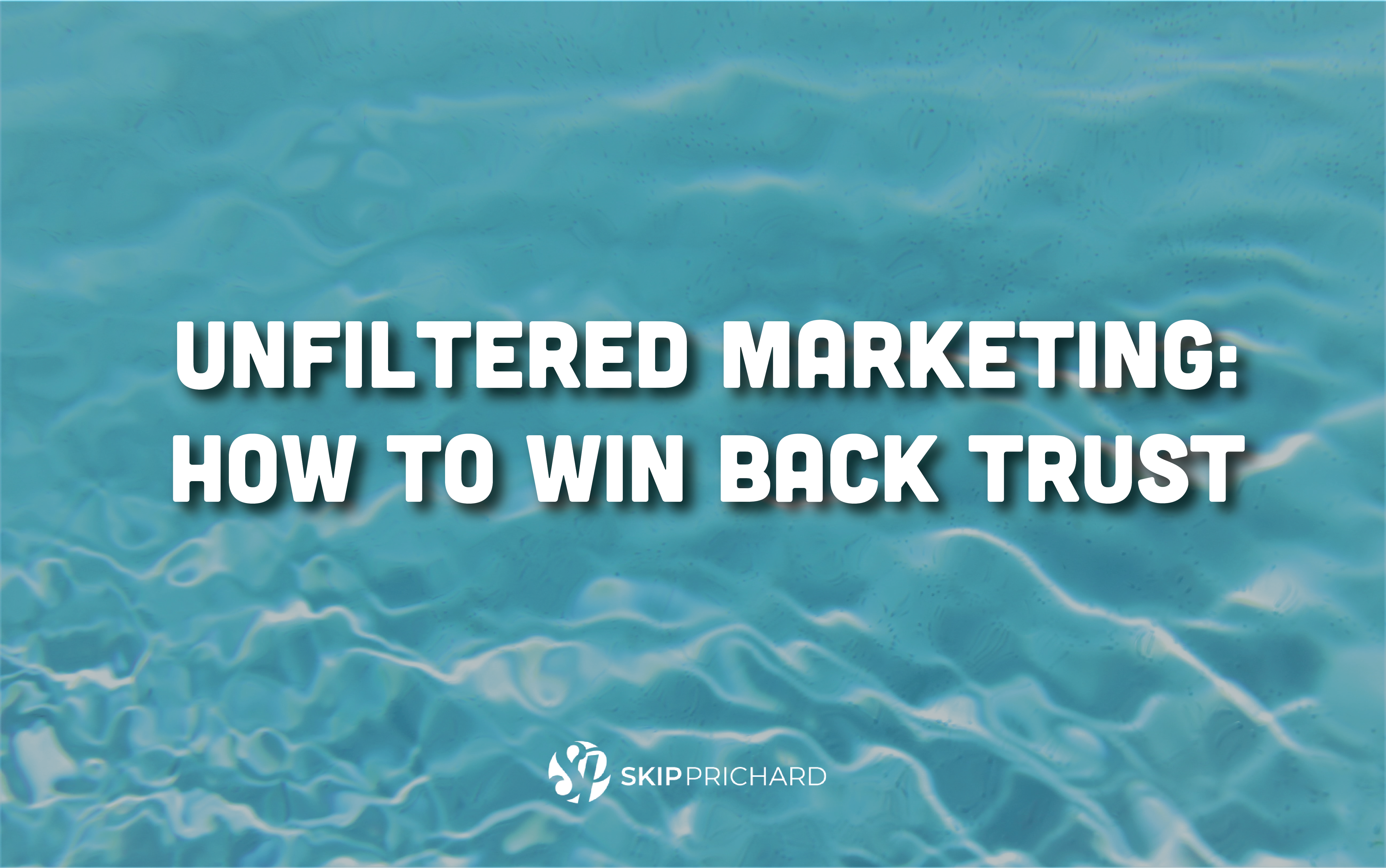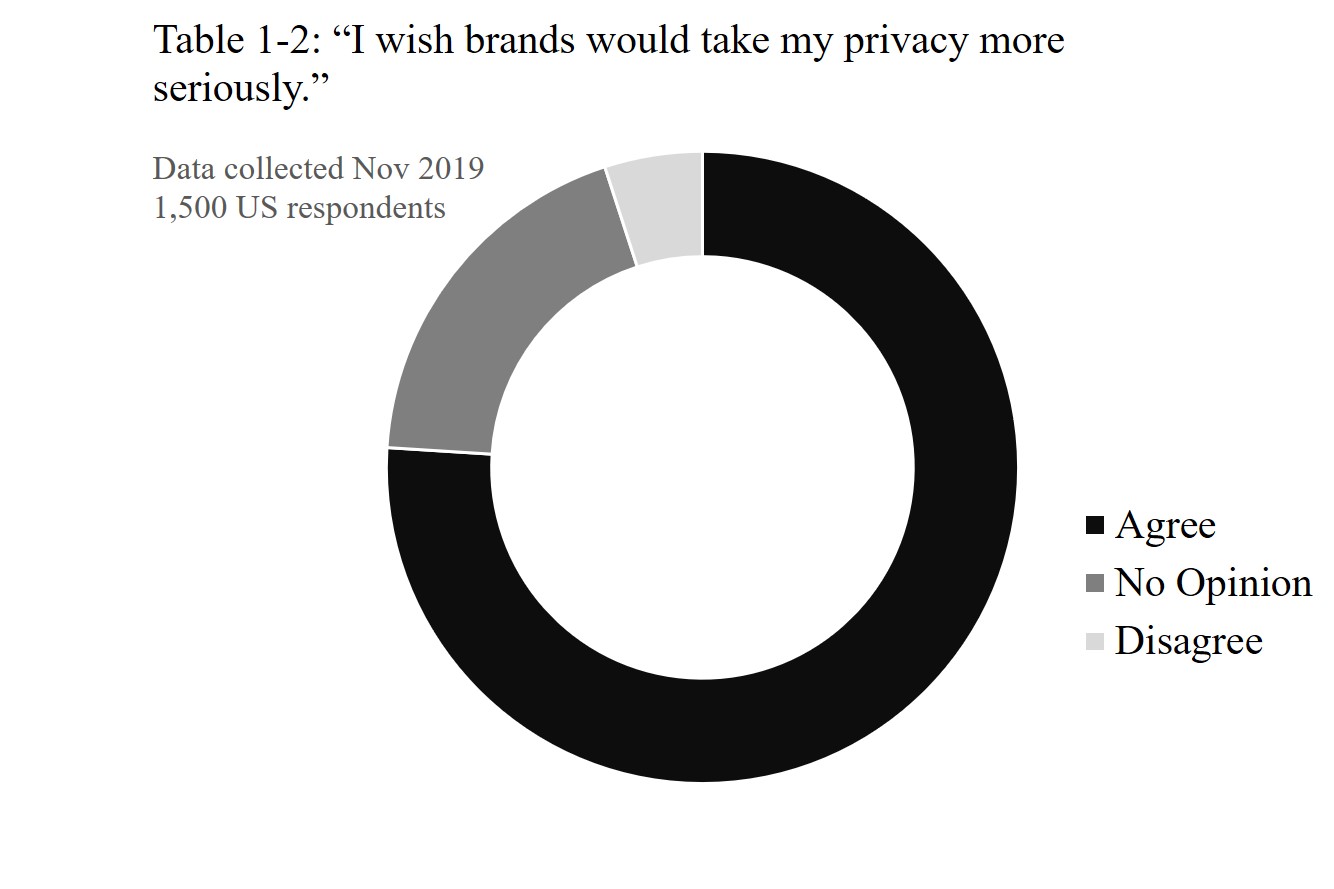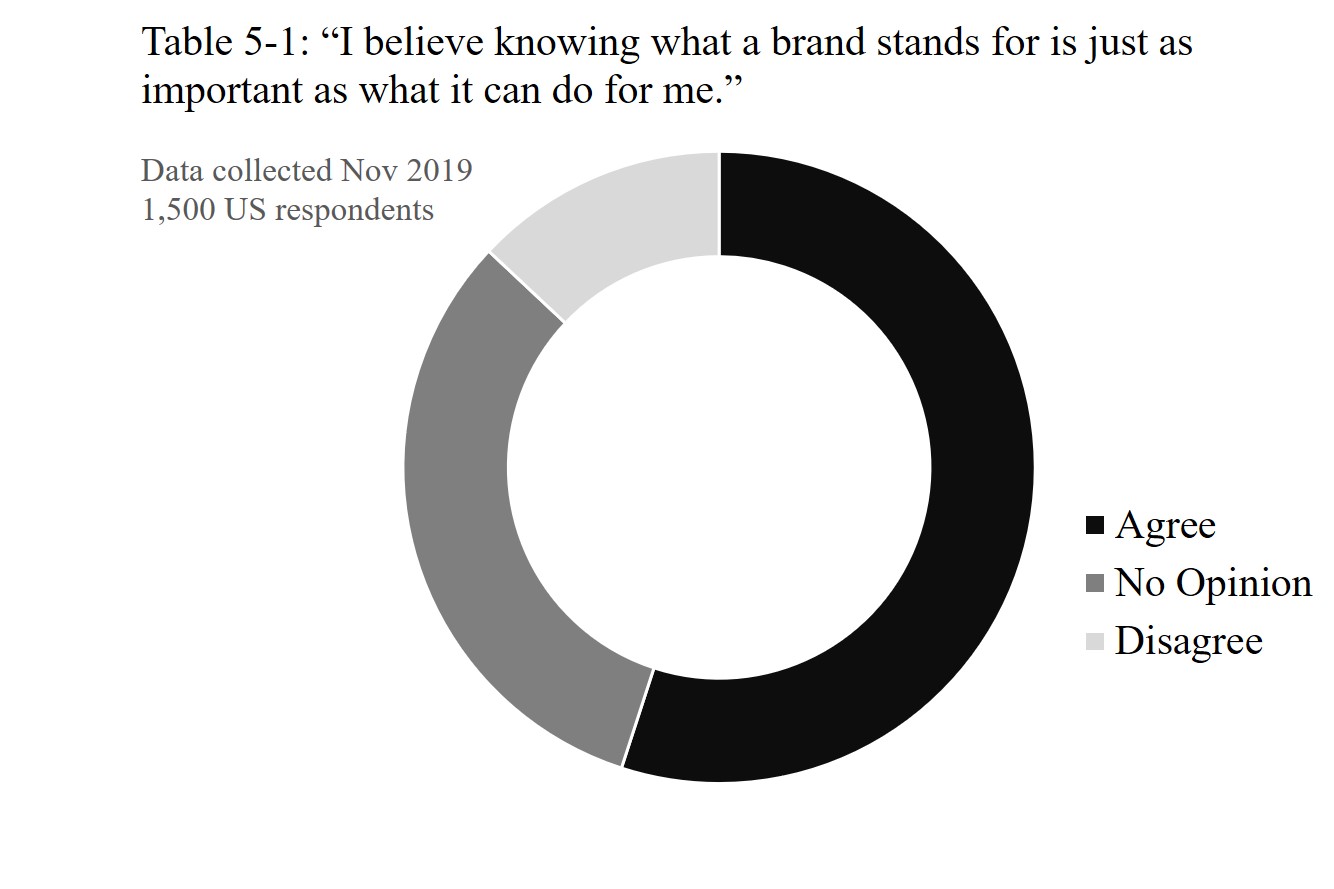We Don’t Want Perfection
Many of us are jaded about what we see. We see the slick presentations, the perfect press conferences, the polished speakers reading teleprompters, the perfectly-perfect everything. And we just take it in and wonder what’s true, and what’s fake.
We don’t want interpreters telling us what we saw or what we should think. We just want to see it for ourselves, make our own conclusions, and decide what we believe.
In other words, we want the unfiltered, plain, raw, and unedited truth. That’s why we pay close attention to social media where we can see the video for ourselves.
Technology has emerged as the single most profound cultural driver in the world today – and the impact of technology on culture has seldom been more important than in these early moments of 2021, where Covid-19, social unrest, and the total collapse of trust in the institutions around us have shaken every assumption that modern marketers have traditionally relied upon.
That’s why I was fascinated by Unfiltered Marketing: 5 Rules to Win Back Trust, Credibility, and Customers in a Digitally Distracted World by Stephen Denny and Paul Leinberger. Based on four years of global quantitative research, the book explores the tectonic shifts in consumer sentiment that have come about due to extreme technological immersion.
This post Q&A with co-author Stephen Denny covers a number of key points from the book.
What are a few of the reasons for the major shift from carefully edited to raw, unfiltered marketing?
Everything begins with the collapse of trust. No one is going to argue that the American people, in particular, have experienced an unprecedented collapse of trust across all the institutions around us today. We no longer trust traditionally trustworthy institutions. This lack of trust extends into the world of technology, as well. We no longer trust the technopolies to safeguard our data, we fear that our information – even our private conversations overheard by the myriad smart devices in our homes – is being captured and used for purposes not in our best interests.
But that’s not enough. And this is critically important. We aren’t willing to simply surrender. We are actively seeking ways to wrest back some sense of control over our lives. We want greater self-sufficiency. We view control over our time as more important than “lots of money in the bank” as a sign of success. This shift is a fairly recent one, and it’s an important precursor to our discussion today.
So, how did we end up with this hunger for “raw”?
In an age of collapsing trust, the only source we now believe is ourselves – our own eyes, ears, and judgment. We want to see the raw feed – the hidden video, the livestream from the street that tells us what is really happening and that the mainstream media glosses over. This is a cultural trend, a new definition of credibility and authenticity that bleeds over into the marketing realm. If our customers are immersed in technology – if they get their information this way, communicating using mobile technology and social media, and both receiving and broadcasting information through this medium – then marketers need to refocus their efforts to ensure they’re no longer trying to play “hero,” particularly when their audience is simply looking for someone to help them make sense of an increasingly chaotic world. We, as marketers, need to ensure we’re presenting the evidence and teaching – not lecturing – our customers the nuances of what they’re seeing so they become more expert in what they’re seeing.
This is a huge perspective shift and one that many still don’t fully understand. In the words of one Fortune 500 CMO, “It changes how we look at everything.”
The shift to “raw” is more complex than simply releasing unmediated content. How do brands successfully make this transition?
When we first went down this path, looking at the first data points back in 2016, we had a rather simplistic view of what this shift meant. After four years of research, and the deeper exploration that we were able to undertake, we saw this broader movement organize into a small set of micro-trends that we describe in Unfiltered Marketing.
“Raw as Unscripted” is the first – and frankly may be the most culturally challenging of the three. Moving the average executive from prepared statements to an unscripted, off-the-cuff, and ultimately more honest and spontaneous communications strategy is terrifying to most. Most executives have been taught since early in their careers that they can never, under any circumstances, appear to not have all the answers. And, of course, this is ridiculous. We want the truth, particularly in an age where we no longer trust anyone or anything. Simply speaking to our audience in a natural, unscripted fashion builds trust because it’s hard to hide.
“Raw as In-Process” refers to co-development, to how brands that communicate in frequent, collaborative bursts with their public create bonds of joint ownership. Compare and contrast this to the high level of secrecy that many brands practice, unveiling product launches all at once with their customers all grouped together as outsiders. We all want to be insiders. We want to feel part of the process. This openness is refreshing. Many brands find this another cultural challenge, believing – usually wrongly – that their processes and products are so highly confidential that no one should be invited inside. This is almost always a victory of ego over common sense.
“Raw as In-Context” plays a critical role in understanding this shift in sentiment because it defines the role that we, as stewards of business, need to embrace. Our job in helping our customers understand the meaning behind this firehose of unmediated content is one of education, not of just evangelism. We need to stop attempting to be the hero in our own drama – which our customers increasingly distrust – and become the “Greek chorus,” standing beside our customer and telling them how to best interpret what they’re seeing. Creating experts, in other words, is far more important than creating “fans.”
Given what has been described by many as the collapse of trust in the institutions around us – from government to academia to the media to big business – how can brands play a role in inspiring movements and leading from a moral high ground?
The answer to your question here is, “yes – but there’s a catch.”
I believe it was the Edelman Trust Barometer a few years ago that first said, in so many words, that the collapse of trust in the institutions around us means that private enterprise can and should step up into the void – and they did, with mixed results. Most every brand thought it necessary to “make a statement” on the controversy du jour, with most falling flat on their faces.
The third major macro trend we identified, we called “heroic credibility.” Because we’re seeking control and because we have this hunger for raw, the only messages that stick are those that really appeal to our personal values. Brand values alignment is critical in touching the emotional triggers that matter to us. But there’s a catch here. And this comes back to the definition of trust itself. If a brand latches onto an idea bigger than itself – a cause like environmental stewardship, for example – we have to truly believe that they are credible on the subject. Look at Patagonia, for example. If they come out with a strong message about the environment, we believe it for the simple reason that Yvon Chouinard has been repeating this same message consistently, credibly, and persuasively since the 1970s. But if a brand jumps into a cultural hot button topic without the necessary credibility, we throw them to the wolves. Look at Dick’s Sporting Goods and their halfhearted attempt to jump into the Second Amendment debate some years ago. That cost them over $250 million at the cash register. People took their wallets and their spending elsewhere.
The bottom line here is that brands that choose to step out and embrace causes or movements bigger than themselves have to be sure that their previous actions stretching back years are consistent with their newly found voice. As Patagonia’s Yvon Chouinard so famously said in an interview some years ago, paraphrased, “The reason so many brands come off as inauthentic is because deep down, they’re inauthentic.”
As leaders embrace the unfiltered methods you suggest, what room is there for the traditional approach? Is it dead? Will there be a hybrid?
Clearly, there’s room for both. There are no absolutes. The world isn’t going 100% towards raw and away from longer form storytelling or high production value content. Far from it. The emergence of raw is the antidote to the collapse of trust, where it can provide an unvarnished window into events and points of view. But longer form storytelling still connects with us on an emotional level. So it’s fair to say that we can look at both as a sort of yin and yang of how the brain looks at content. Raw reaches us as the more credible source of material on a rational basis, while long form storytelling hits our emotional center. Rational versus emotional, truth versus fantasy, fact-finding versus entertainment, yin versus yang.
Would you share an example of a company or leader doing it well?
Ed Bastian of Delta Airlines comes to mind. Look at how he stepped in front of the cameras during Deltas infamous IT outage in 2016. No script, no communications people standing between him and the cameras, just the chief executive officer of a major airline explaining calmly to an angry public that they were working on the problem and that they’d update everyone shortly.
John Legere, formerly of T-Mobile, was another outstanding example of how “unscripted” came to be the dominant form of outbound communication of a major American brand. He gives a wonderful story of how one day, at the Consumer Electronics Show, he simply snapped and went off script. From that moment on, both Legere and T-Mobile were a fully unscripted brand. And the “un-carrier” was born.
Of course, Patagonia is always a great example, not only in how they communicate with customers in an unvarnished and natural way, but in their wholehearted embrace of heroic credibility. Patagonia and Chouinard are inspirations to any brand seeking to win back trust in a distrustful world.
What skills should leaders be developing to market this way?
So much of what we’ve discussed has its roots in cultural change. If we look at the shift that needs to take place for most brands to move from traditional command and control management styles to a more unfiltered, raw stance, we see a lot of impediments that are likely to be in our way. We need to address this first.
 Look at our first macro trend, seeking control in an out-of-control world. How do we make this happen in the real world? How do we give our customers – or our employees – control over a world that is oftentimes perceived as spinning out of their control? We push control back into their hands. We find ways to ensure that they have the means to create their futures, have complete transparency into their status, and know where they are at all times in their journey to completion. This means, by definition, that we need to drop our command-and-control cultural values – or soften them, or potentially find pilot program where we can relax them. If our customers demand control, we can choose to listen or continue to ignore them at our peril.
Look at our first macro trend, seeking control in an out-of-control world. How do we make this happen in the real world? How do we give our customers – or our employees – control over a world that is oftentimes perceived as spinning out of their control? We push control back into their hands. We find ways to ensure that they have the means to create their futures, have complete transparency into their status, and know where they are at all times in their journey to completion. This means, by definition, that we need to drop our command-and-control cultural values – or soften them, or potentially find pilot program where we can relax them. If our customers demand control, we can choose to listen or continue to ignore them at our peril.
How do we lead with “raw”? Similarly, it takes cultural courage to push the ego out of the way and shift from hero to teacher. How can we show the evidence, give our customers a guided tour behind the proverbial velvet rope, include them in our processes and embrace co-development? Are we willing to admit to ourselves that not everything we do is so magnificently proprietary that showing our customers how we do things might rebound to our greater benefit?
Is “heroic credibility” something we can credibly manage? Do we have an important, ownable, and believable message bigger than our narrowly defined product category in our DNA? Can we provide a north star for our customers that is both aspirational as well as credible? This one is harder because it requires deep introspection as well as a serious ego check. If your brand has taken concrete steps over many years to support an idea bigger than itself, feel free to talk about it. Show your work, all the way back to the beginning. Do you want to jump on a bandwagon because “we need to make a statement”? Stop before you beclown yourself.
While each of these macro trends are worth serious study and can lead to breakthroughs when applied to operating plans, the real benefit to leadership is when all three are viewed together, as one single holistic system. When we look at them together as a whole, we see an emergent blueprint, a playbook, for 21st century performance in the workplace.
We want to work for leaders who push control back into our hands and give us a sense of control over our own outcomes; who show us the evidence and give us a raw and unfiltered look at how we’re collectively doing; and who are able to identify a North Star that is believable, credible, and aspirational. All three work together seamlessly, particularly when the audience is comprised of technologically immersed employees with the same wants and needs as our customers.
For more information, see Unfiltered Marketing: 5 Rules to Win Back Trust, Credibility, and Customers in a Digitally Distracted World.
Image Credit: Siora Photography







